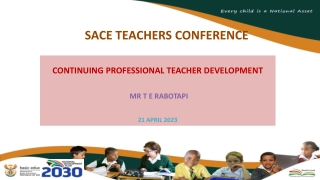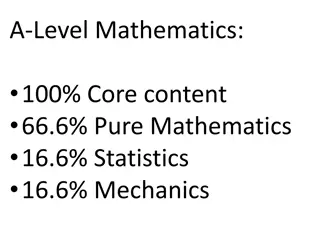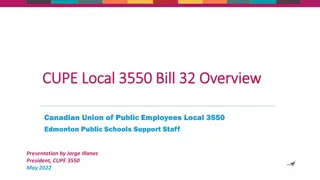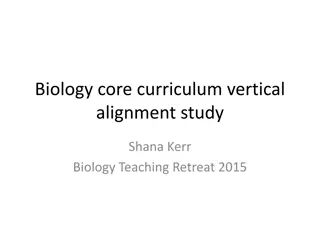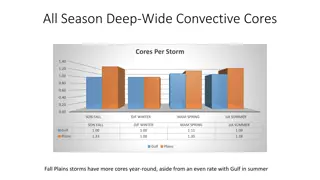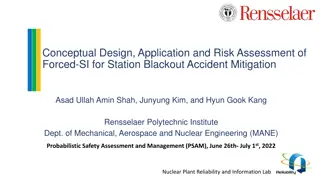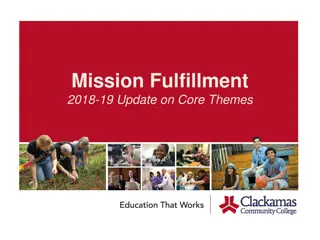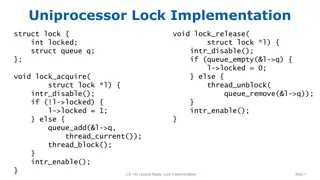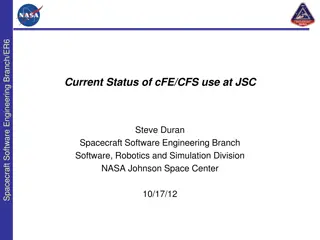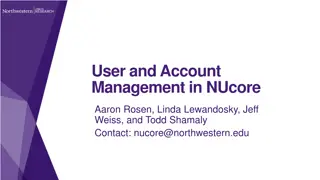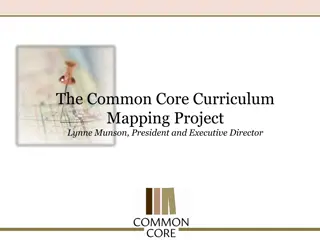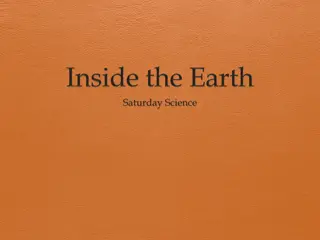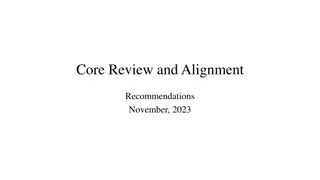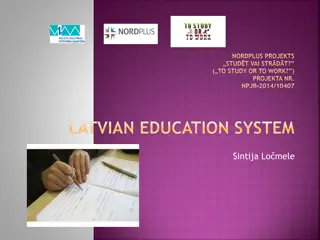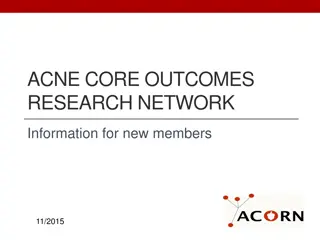thus be squarely placed at the core of the system of education
Explore the integration of formal education, lifelong learning, and professional development within the educational system, examining their importance and intersections. Delve into societal advancements impacting education's structure and adaptability.
Download Presentation

Please find below an Image/Link to download the presentation.
The content on the website is provided AS IS for your information and personal use only. It may not be sold, licensed, or shared on other websites without obtaining consent from the author.If you encounter any issues during the download, it is possible that the publisher has removed the file from their server.
You are allowed to download the files provided on this website for personal or commercial use, subject to the condition that they are used lawfully. All files are the property of their respective owners.
The content on the website is provided AS IS for your information and personal use only. It may not be sold, licensed, or shared on other websites without obtaining consent from the author.
E N D
Presentation Transcript
NERA Department of Learning and Philosophy Aalborg University Copenhagen 45th Congress of the Nordic Educational Research Association (NERA) March 2017 Why formal education, lifelong learning (LLL) and professional development (PD) should be a part of the same educational discourse and thus be squarely placed at the core of the system of education (and why not) J n Torfi J nasson, School of Education, University of Iceland jtj@hi.is
Other ways to phrase my question(s) How does our system of education take into account societal developments in its structure and operation? Does the system of education adapt itself to rapidly changing demands for education in a fast and continually changing society? Here I am referring to structure. It is perhaps even more pressing to talk about content, but that would be a different session. J n Torfi J nasson NERA 2017 2
A preamble to the current argument I I. I am talking about LLL in general. But I will turn to a specific subset for the sake of clarity and force of the argument. I accept the term learning as a focus, even though I would prefer to use the term education . (See e.g. Andreas Fejes. (2014). Lifelong Learning and Employability) LLL Basic education Secondary education II. There are important subsets of this discussion. I. First is the rhetorical notion that LLL is a term to emphasise that learning extends from birth to death, i.e., to note that all learning, including kindergarten, school and all later learning should be accepted as being important. Tertiary education Adult Education General LLL II. In there, is the basic, general, formal education, which people do not have in mind when talking about LLL. Professional development III. Also, what we may call General LL education (for skills or enlightenment). IV. Then we have Adult education, which is normally treated as a special field, intended for people who have not received basic education and then seek it as adults. I will not focus on this part in the present talk. Work based development V. Professional development (PD), which is an immense part of the LLL discourse. J n Torfi J nasson NERA 2017 3
There are many different discourses at large and it is not clear how the intersect, but they certainly do, but they don't seem to interact explicitly Professional development Work place learning Adult education Continuing education Formal (higher) education Lifelong learning Informal education Distance education e-learning Informal learning Non-formal education J n Torfi J nasson NERA 2017 4
A preamble to the current argument II I. The basic formal argument is at least 60 or 70 year old but in fact much older. II. The premises and lines of argumentation are not new either III. There are little signs that the system takes any notice, neither in terms of rhetoric, ambitions, infrastructure, nor financial considerations IV. Thus we need to do three things: I. Rehash and rethink the arguments II. Evaluate if the set of arguments has strengthened or weakened III. Explore and evaluate the forces or constraints that frustrate and motion in the direction of more sensible infrastructures J n Torfi J nasson NERA 2017 5
The four parts of the current argument I. The premises on which the current system of education is based are outdated (not wrong). II. The new premises require LLL. There are four lines of argument to underpin and mould these. The first line of argument focuses on change The second line of argument focuses on pedagogy The third line of argument has a focus on the political or cultural environment The fourth line of argument has a focus on the way people become experts, through deliberate practice and coaching As for PD all this can only be developed on the job, partly as the job also develops. III. The third part presents the system perspective, introducing the system inertia Various obstacles to system change are presented. This part is largely inspired by J nasson (2016), but here the emphasis is on the system rather than content. IV. The fourth part is a critique of the above argumentation J n Torfi J nasson NERA 2017 6
The four parts of the current argument I. outdated (not wrong). The premises on which the current system of education is based are J n Torfi J nasson NERA 2017 7
The question is also about what the LLL discourse in fact conveys or reflects The rhetoric is sensible, but very general and thus does not imply any concrete settings it doesn t imply anything except that education never ends a notion that has been accepted for centuries Time line, extending from the beginning of school to the end of working life (and on ) The rhetoric of lifelong learning Initial, pre-service and in-service education and professional development, with general LLL The system is denoted by the dark green sections, even though some of the rest is formalised it is still outside the system of education (with exceptions) The system as it operates Basic education, pre-school primary, secondary, to university Outside the system Continuous LLL Adult education professional LLL development LLL J n Torfi J nasson NERA 2017 8
Providers of non-formal education Adult Education Survey 2011 25-64 year olds OECD 35 30 26 countries Very substantial variation by country Considerable missing data 25 % Percentage 20 15 10 5 0 Educationat a Glance 2016. Table C6.6 Distribution of non-formal education and training activities, by provider (2011). J n Torfi J nasson NERA 2017 9
The premises on which the current system of education is based are outdated (not wrong). We mistakenly, implicitly, assume 1. That we know what knowledge will be powerful for a future life or what competencies come us in good stead generally With reference to challenges, culture, technology or jobs 2. That we know what competencies certain jobs or professions, or participation in society generally, would be best served by 3. That we know what jobs will exist in the near or far future or what complex challenges await us 4. That we know our labour market trajectory or any trajectory for that matter; in particular that we will stay in one job or vocation or profession for long for which we can usefully prepare 5. That fast changes in the past few decades will slow down; the rapidity of change is now finally over All taken together, that things will be relatively stable, as they were in relative terms in the middle and even latter part of las century. Of course nobody really assumes all of this!? But the system seems to. J n Torfi J nasson NERA 2017 10
Again we (the formal system) mistakenly, implicitly, still assume the setting at the top rather than that of the bottom A schematic diagram indicating the way many people think (implicitly) about education, accepting a relatively sensible description for the 1950 s Age 0 21 41 61 81 School Work Work Work Work Upper panel 1950's It is suggested here that a much more appropriate description or conceptual framework would be (note we are hinting at 5 x 20 year periods): Age 0 21 41 61 81 School Work Work / leisure Work / leisure / pension Lower panel 2020's J n Torfi J nasson NERA 2017 11
The four parts of the current argument II. The new premises require LLL. There are four lines of argument to underpin and mould these. The first line of argument focuses on change The second line of argument focusses on pedagogy The third line of argument has a focus on the political or cultural environment The fourth line of argument has a focus on the way people become experts, through deliberate practice and coaching As for PD all this can only be developed on the job, partly as the job also develops. J n Torfi J nasson NERA 2017 12
The new premises require LLL There are four lines of argument to underpin and mould these premises. Some people want evidence based policy: The evidence we have demands that we take these arguments seriously J n Torfi J nasson NERA 2017 13
The new premises require LLL In every walk of life the changes taking place are enormous often with exponential characteristics. There are demographic, cultural and labour market changes. New challenges emerge all the time related to sustainability and climate. There is an ongoing knowledge explosion with enormous changes e.g., in biology, genetics, computer science and technological tools but of course in every field. J n Torfi J nasson NERA 2017 14
The new premises require LLL We learn by working, trying - doing, by receiving expert guidance and inspiration in situations we know to be authentic, relevant and challenging. We are constantly facing new challenges that we are motivated in our daily jobs to overcome. Being immersed in real life situations with professional coaching and encouragement is the most sensible for effective professional development. J n Torfi J nasson NERA 2017 15
The new premises require LLL There is a host of political pressures on the schools that are rather merciless, but variable and difficult to simulate. Developing one s job expertise is very situation specific. The existing pressures may mould the life in the labour market more than any formal technical or academic argument or knowledge may do. These relate to labour policy (e.g. to educational policy for teachers, on inclusion, testing, tracking, etc. etc.) and to cultural norms in the work place. J n Torfi J nasson NERA 2017 16
The new premises require LLL Development of expertise takes time. It also requires deliberate and guided practice, which calls for coaching in authentic circumstances. It also requires critical reflection on the tasks at hand and new and alternative ways to do things. This can only happen on, or related to the job, or real life circumstance, even though it may be worthwhile also to step outside it at times for reflection. J n Torfi J nasson NERA 2017 17
A summary of these arguments Change In the labour market and in most jobs, and in life generally, very rapid updating, based on well informed expertise, is crucial. Pedagogy Arguments based on motivation, and feedback that refer to developing knowledge of the task and on the task, are very strong. External pressures politics of the work place, especially of the working environment make most (professional) development very situation specific. Expertise needs to be developed over time in most jobs or tasks, and relies on expert coaching in authentic circumstances. Again, all this depends on specific situations, but taken together, presents a very powerful argument for a shift towards a systemic implementation of PD and related LLL, within the system of education an idea that seems alien to HE. The argument suggests that in-service (and in-life!) education is no less important than pre-service education and deserves at least the same attention and same emphasis on infra-structure. J n Torfi J nasson NERA 2017 18
The four parts of the current argument III. The third part presents the system perspective, introducing the system inertia Various obstacles to system change are presented. This part is largely inspired by J nasson (2016), but here the emphasis is on the system rather than content. J n Torfi J nasson NERA 2017 19
There are little signs that the system, takes much notice as far as its main agenda is concerned, - i.e., with reference to LLL, either in terms of rhetoric, infrastructure, nor financial considerations: But it could! With reference to the four lines of argument we note that the education system in particular HE, due to its research agenda: The system has various ways to take constructive notice: a) Knows a lot about the future and future competencies it would perhaps be better equipped content-wise - to deal with LLL and in particular PD, than initial vocational professional education where its present focus lies With its pedagogic expertise the system is well equipped to address the pedagogic challenges It is to be fair not competent to address or take into account all the political or external pressures interwoven into most real life tasks, but is competent to design environments where this would be done It could be an important partner in providing the coaching and the reflective component needed for proficient development of expertise a) Offer accredited courses or degrees this is its main contribution often on top of basic accreditation (but is not what is needed) b) Many (perhaps most) universities have departments or units to deal with continuing education but these efforts are rarely an integral part of its mainstream educational agenda it is seen as marginal (in more than one sense) c) There are examples of research that explicitly interweaves research and on the job development a) - action research (various strands) b) - Activity theory related research see e.g. CRADLE in Helsinki c) b) c) d) J n Torfi J nasson NERA 2017 20
Formal vs non-formal education systems Or, what characteristics do these systems have, which makes them more, - or less rigid? Perhaps some of the following but not all may be important The system of education Formal education Education outside the system Non-formal education Insitutionalised curriculum Credentials Fully or largely paid by the State Tested, evaluated Pre-life, pre-service Hierarchical, vertical Run by professionals Substantive work by permanent staff Sometimes curriculum, but idiosynchratic No, or non-systemic credentials Only marginally supported by the State Marginally tested or evaluated In-life, in-service Lateral, not considered cumulative Run by non-professionals Substantive work by ad hoc staff J n Torfi J nasson NERA 2017 21
Strengths and weaknesses of the different strands Strengths Weaknesses Developed, populated, visible, respected, accredited, run by professionals, institutionalised, financed? Market driven, adjustable, flexible, accessible, institutionalised, has some formal financial backing Flexible, innovative, adjustable, driven by interest, relatively cheap Rigid, over confident, costly, isolated, relatively expensive, out of date in form and content Formal Weak institutional base, weak financing, weak quality assurance, little accreditation No institutional base, no financing, no accreditation, no quality assurance, Non-formal Informal J n Torfi J nasson NERA 2017 22
The forces of stagnation the inertias and the likelihood of substantial change There are very many reasons why systems and people don't want to change, I have called them the inertias These are of many sorts including, old discourses, a variety of strong vested interests, preservation of status and power, outdated skills, outmoded ways of operating, lack of knowledge about change or new possibilities, lack of understanding of changing roles for education, conservative values (some are very good, some are not), etc. Thus taking together the characteristics of these institutional forms, their strengths and weaknesses and their inertias, - having the focus in the formal systems- and sub-systems, we may be able to envisage how likely they are to change, or what we should address in an attempt to encourage change but I am not sure who would be interested in doing this. J n Torfi J nasson NERA 2017 23
The four parts of the current argument IV. The fourth part is a critique of the above argumentation J n Torfi J nasson NERA 2017 24
A critique of the above argumentation All the systems can co-exist; is beneficial to have many different systems; we are perhaps even best served without a system for LLL or any of the present non- formal parts of it. The formal system does participate within the non- formal sector; much more than is indicated above. The population and the labour market are well-served without the meddling of the formal system; it is inherently conservative. The four arguments for the emphasis on LLL or PD don t require the participation of HE system as suggested. J n Torfi J nasson NERA 2017 25
Thank you J n Torfi J nasson NERA 2017 26


